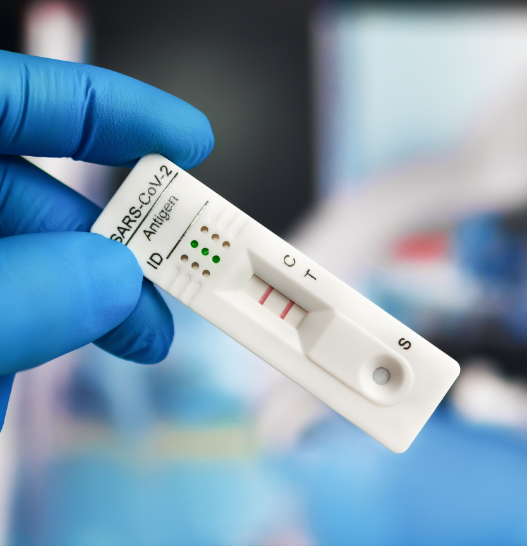Is Usability Engineering mandatory for your medical device? Which regulations and standards must be observed? Can you benefit from a possible Usability Obligation and how do you manage to comply with the obligation in the most targeted and uncomplicated way possible?
We will get to the bottom of these questions in our basic article. To make it short and direct: Yes, Usability Engineering for medical devices is mandatory. At the end of this text, you will know why this is so and how your product can benefit from the situation.
Is there a Usability Obligation?
The term “Usability Obligation” does not exist per se. Nevertheless, Usability Engineering is indirectly mandatory for your medical device. In the meantime, usability is perceived and required as part of product safety. However, you are not only obliged by various standards (listed below) to perform Usability Engineering, but also to provide evidence of your activities for a good usability of your product.
Therefore, for your product to be approved, you must prove that it can be used safely and effectively according to its intended purpose without unacceptable risks for users, patients and bystanders. This evidence is provided by the summative evaluation. To find out how best to prepare for the summative evaluation of your medical device, read our article “17 Dos and Dont’s when conducting summative usability evaluations.”.
The usability of a medical device is also becoming more and more of a focus of requirements in the future. The Medical Device Regulation (MDR, 2017) already places far more demands and requirements on the usability of a product in Europe than the predecessor standard. The topic of Usability Engineering will therefore remain relevant and tend to become increasingly important.
In the following, we take a closer look at the most important regulations and their requirements for the usability of your medical device.
The MDR – the EU Medical Device Regulation
The European Medical Device Regulation contains the word usability only twice. Once in connection with the collection of data for monitoring the product after it has been placed on the market. No surprise, then, if one asks “does the MDR require Usability Engineering?”.
The places in the MDR that require a Usability Engineering process according to IEC 62366-1 are more numerous.
For example, Annex 1, subitem 3c) requires that use-related risks be excluded as far as possible:
“estimate and evaluate the risks associated with, and occurring during, the intended use and during reasonably foreseeable misuse.“
To demonstrate that no foreseeable misuse occurs, you must conduct usability testing with real users.
Sub-item 5 of the first annex requires that in eliminating or reducing risks due to misuse, manufacturers must:
(a) reduce as far as possible the risks related to the ergonomic features of the device and the environment in which the device is intended to be used (design for patient safety), and
(b) give consideration to the technical knowledge, experience, education, training and use environment, where applicable, and the medical and physical conditions of intended users (design for lay, professional, disabled or other users).
So you need to use Usability Engineering to design a safe medical device and then use user testing to prove its safety.
This includes, above all, minimizing the risks posed by the ergonomics of the product. It also specifies that you have an obligation to prove that the target group also has the necessary skills to be able to use the product without errors. You are also required to provide instructions for use tailored to the user group.
The Food and Drug Administration (FDA) – the American authority for food and drugs.
The American FDA also sets requirements for the usability of a medical device. The FDA divides medical devices into three classes. Depending on the class, there are special requirements for clearance.
Usability Engineering must be done, according to the FDA, if:
- The medical device in question appears on the „List of Highest Priority Devices for Human Factors Review”.
- Serious danger may result from misuse of a device.
The FDA guidance document also makes a clear recommendation to integrate Usability Engineering into product design, development and risk management:
“HFE [Human Factors Engineering]/UE [Usability Engineering] considerations and approaches should be incorporated into device design, development and risk management processes.” (source)
FDA may also request Usability Engineering data at any time in the event of product changes, changes in user groups, or the occurrence of serious user problems.
Conclusion from the examination of the regulations: Usability is seldom explicitly mentioned, but always (indirectly) required.
Even though the word “usability” seldom if ever appears in some regulations, good usability is always required when it comes to the clearance of medical devices.
On a legal level, it is important to be able to prove that you have done everything for the usability of your product in case of an emergency. If a use error could have been prevented by an appropriate Usability Engineering process, this use error may be considered a product defect and your company will be liable for it.
How do you achieve compliance with the Usability Obligation for your medical device?
Even though Usability Engineering is mandatory and essential for your own medical device, there is very little guidance in the standards on how to implement it.
The IEC 62366 and the FDA guidance document „Applying Human Factors and Usability Engineering to Medical Devices“ tell you exactly how to implement the Usability Obligation for your medical device.
The implementation of the Usability Obligation using the IEC 62366:
IEC 62366:2015 is the standard on the Usability Engineering process and replaces its predecessor, the IEC 62366:2007. It is divided into two parts:
- IEC 62366-1 goes by the title “Application of usability to medical devices.”
- IEC 62366-2, entitled “Guide to the application of usability engineering to medical devices”, then provides the concrete guidance for implementing the requirements of IEC 62366-1.
IEC 62366-1:2015 mandates the application of a Usability Engineering process to medical devices. It specifies what manufacturers must accomplish in order to:
- To analyze
- To specify
- To develop
- Evaluate for usability
What is delivered is therefore a Usability Engineering process that is designed to minimize risks as far as possible. This is done by ensuring proper use and eliminating ergonomic features that pose risks. Close collaboration with ISO 14971:2007, the standard on the application of risk management to the manufacture of medical devices, is also specified.
The second half of IEC 62366, i.e. IEC 62366-2, provides more concrete information on how to implement the Usability Engineering process in one’s own product development.
In our article with the title “Usability Engineering nach IEC 62366-1” we explained the process step by step.
The implementation of the Usability Obligation using the Guidance Document “Applying Human Factors and Usability Engineering to Medical Devices” of the FDA:
IIn a guidance document entitled „Applying Human Factors and Usability Engineering to Medical Devices” the FDA specifies very clear measures for Usability Engineering. The aim is to provide developers with assistance in guaranteeing safe, efficient use through the Usability Engineering process.
The process must always take into account the user group and their knowledge:
“You should evaluate and understand the characteristics of all intended user groups that could affect their interactions with the device and describe them for the purpose of HFE/UE evaluation and design. These characteristics should be taken into account during the medical device development process, so that devices might be more accommodating of the variability and limitations among users”. (source)
Das Guidance Dokument liefert weiterhin folgende Anhaltspunkte:
- Es definiert, was kritische Bedienfehler und Use Errors generell sind. (Kapitel 3)
- Es gibt Aufschluss, wie das Usability Engineering in das Risk Management integriert werden soll. (Kapitel 4)
- Es liefert klare Anforderungen daran, dass vor dem Usability Engineering die folgenden Faktoren definiert und dokumentiert werden müssen: Nutzergruppe(n), Nutzungsumgebung und das Interface Design des Produkts.
- Es liefert eine Herangehensweise, um kritische Bedienschritte herauszufinden. (Kapitel 6)
- Es liefert Anforderungen an die richtige Dokumentation des Usability Engineerings. (Kapitel 9)
What advantages can a Usability Obligation bring you?
For the clearance of your medical device you may be forced to include Usability Engineering in the development process. However, that doesn’t mean that there aren’t other benefits to you besides clearance from good usability of your product. In addition to the safe, efficient and effective use of your product, you will benefit from the following:
- A product with good usability often also promises a positive user experience. This can be a clear market advantage over your competitors.
- In the event of liability, you can prove that a use error is not due to a product defect.
- For monitoring the product after it has been placed on the market, Usability Engineering provides you with a very good basis of data on which to build.
Conclusion
Usability Engineering and its proof must be provided for the clearance of your medical device. The MDR and the FDA have different requirements for the usability of your medical device. IEC 62366 and the guidance document “Applying Human Factors and Usability Engineering to Medical Devices” are helping here. Nevertheless, it is always advisable to have a professional partner at your side who is familiar with the regulations and standards.
Are you planning to launch a medical device and are still unsure how exactly to implement the Usability Obligations for your product? Feel free to write us your case-specific questions in the comments or contact us directly via our contact form.



